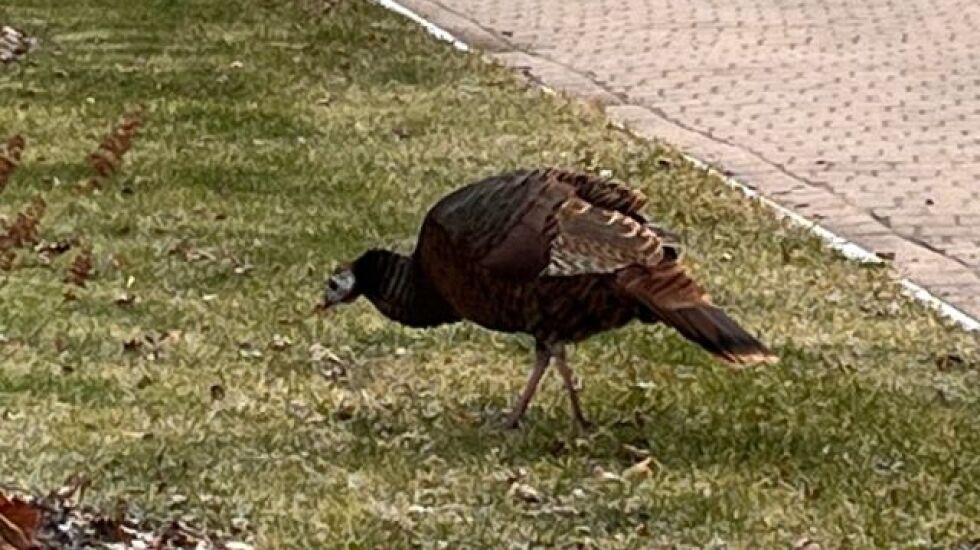The myth of Ben Franklin suggesting the wild turkey would make a better national bird/symbol than the bald eagle has been debunked.
Too bad. I admire the resilient, adaptable wild turkey far more than I do the bald eagle, a scavenger and thief. (Granted, bald eagles are more majestic and beautiful than the wattle-necked turkey.)
In Illinois, turkeys were extirpated by the early 1900s. Reintroduction began in 1959. It was wildly successful. Turkeys are now present in all 102 counties, even into Chicago and the suburbs.
Illinois’ spring turkey hunting (bow or shotgun) begins Saturday with the first weekend youth hunt; the second youth hunt is next weekend. The first of five seasons in the south zone begins April 3; the first of five in the north starts April 10. Spring turkey hunting is allowed in 100 of Illinois’ 102 counties, with DuPage and Cook being the exceptions.

When I asked about a season preview, Illinois wild-turkey project manager Luke Garver willingly delved into Franklin, turkeys and eagles.
‘‘I’ve done some fact-checking on this story myself,’’ he emailed. ‘‘While [Franklin] wasn’t a public proponent of wild turkeys as the national symbol, he did mention the wild turkey in a very positive light in a letter to his daughter, describing it’s higher ‘moral character’ than bald eagles’ and calling it a ‘true American native.’
‘‘Personally, I can’t picture any bird as our national symbol other than bald eagles. But that doesn’t mean the wild turkeys don’t deserve a spot somewhere in imagery representing our country. After all, they are native only to the Americas and are the world’s largest gallinaceous bird. Perhaps we could lobby to designate them as our National Game Bird.’’
I could get behind that.
As for this spring in Illinois, prospects are good for turkeys and hunters.
‘‘Turkeys fared pretty well with weather over the last year in Illinois,’’ Garver emailed. ‘‘Cool, wet weather can really wreak havoc on nesting hens and especially newly hatched poults in late spring and early summer. Looking at statewide averages, weather during nesting and brood-rearing was relatively favorable and was probably one factor contributing to the uptick of reproductive success that was observed in 2022.
‘‘In fact, it appears many flocks in Illinois are on the rise because 2022 was our third straight year of increasing reproductive success.’’
That led him to speculate this: ‘‘I don’t predict a record-breaking harvest, but considering we’ve seen three consecutive years of increasing reproduction metrics, I think we can expect a higher harvest than the last two years, which were both below average.’’
In 2022, 13,701 turkeys were harvested. Permit success was 19.8%, so about one in five. The record harvest of 16,569 came in 2006.
The anomaly came in 2020, when pandemic restrictions shut down public sites, yet harvest jumped to 15,831. The success rate for permit holders that year was 28.2%, better than one in four.
‘‘We saw a fairly large increase in hunter effort during the 2020 season, which may have resulted in some higher harvest pressure than what is typical,’’ Garver emailed. ‘‘We saw the highest harvest total since 2012 that year, as well. Those factors may have influenced the next two low harvest totals, but our season structure insulates us from overharvest pretty well.
‘‘As with all wildlife species, turkey-population trends are dependent on many factors, and I would bet reproductive success bottoming out in 2019 had more to do with lower harvest totals in 2021 and 2022 than anything.’’
Hopes are up with that third consecutive year of ‘‘increasing reproduction metrics.’’








